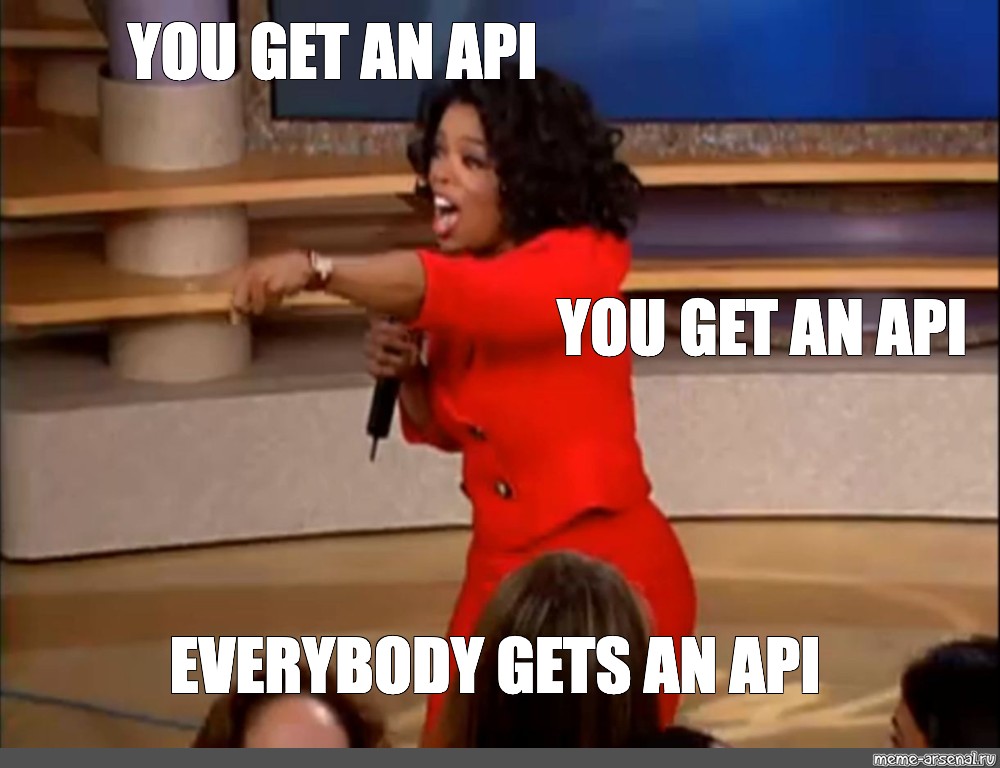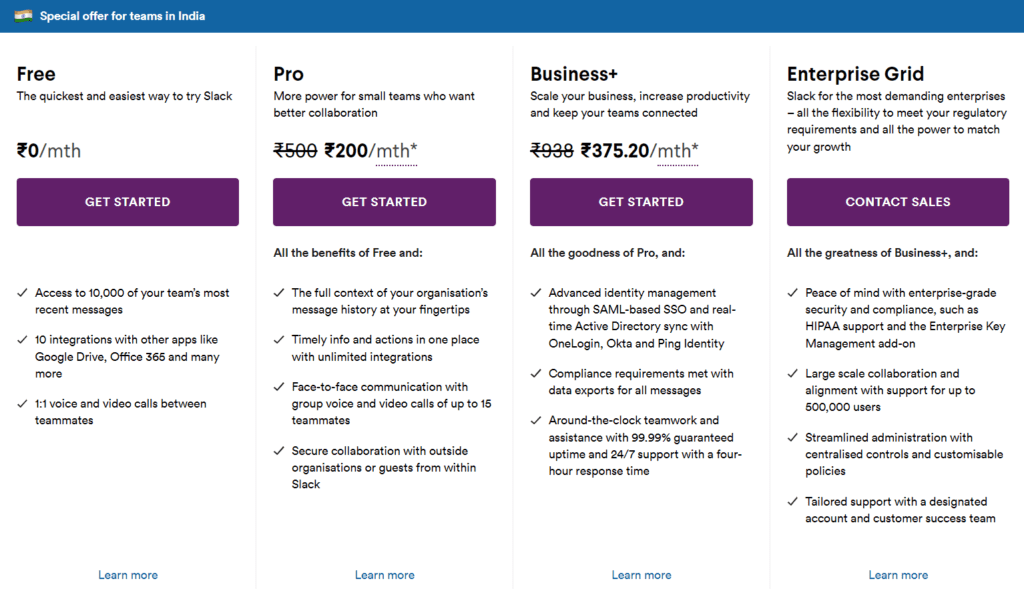If you had asked me about Slack a couple of years ago, I might have given you a look like this:
Because, I was pretty much clueless about it.
Having worked for an established company before TCC, I was only familiar with Google and its messaging platforms.
But, today, I know all about Slack and its counterparts (thanks to TCC and our customers).
Being the curious cat that I am, I decided to explore the roots of Slack and how it became one of the most successful messaging platforms today.
You won’t believe what I found. Read it in this blog.
Table of Contents
How Did Slack Begin its Journey?
For the newbies here, let me explain what Slack is.
Slack is an instant messaging platform, an internal communication tool if you will, designed specifically for business (or rather, office) purposes.
Would you believe me if I tell you that Slack was not the “big product idea” its founders had? Or that it was just a tool the developers used internally for communication?
No, right?
Even I didn’t.
Well, the truth is, Stewart Butterfield, one of the founders of Slack used it as an internal communication tool at Tiny Speck (now, Slack Technologies) during the development of an online video game, Glitch.
That means, Slack was technically a by-product of an online game.
While the game did not make it big, Butterfield with other founders Eric Costello, Cal Henderson, and Serguei Mourachov, envisioned Slack’s comprehensive use in organizations on a daily basis.
Slack was set in motion in August 2013, signing up 8000 users within 24 hours of its launch.
Did you know: Slack is the abbreviation for Searchable Log of All Conversation and Knowledge.
I know, you must be like:
Even I was.
The Slack Pivot: How it Happened?
Suffice to say, Slack was made possible for the entire world today owing to a timely pivot.
A pivot which was not the first for its visionary founder, Butterfield.
Before Slack happened, Ludicorp (a startup Butterfield co-founded with Catherina Fake) had developed a game called Game Neverending, which housed a photo-sharing feature named Flickr.
Just like Glitch, they realized the limited financial potential of the game, not forgetting the love Flickr received as a feature.
That was Butterfield’s first quick yet successful pivot. From a video game to one of the best photo-sharing apps in the early 2000s.
Slack comes from a similar background.
When Butterfield realized that Glitch may not lead to commercial success, he announced the launch of Slack as an instant messaging platform while working on the game.
That’s how Slack became the second successful pivot sourced by Butterfield.
(Butterfield sounds like a startup genius to me)
To be honest, understanding what Slack did was a challenge, because company-wide communication was limited to emails or P2P discussions.
Man, I found it confusing even in 2021.
But, we all know where Slack is right now. As I write this blog, Slack has completed 9 years in business and reached pinnacles they never imagined.
Did you know: Slack was previously named linefeed.
The Then Scenario of Communication Channels
Let’s think about the communication channels we know today.
There’s
Well, the list is endless now.
But, back in 2013, when Slack came into the picture, there was practically no list.
Internal communication at organizations was not preferred online or via instant messaging. And so, most of us found it complicated in the beginning.
Now, with the hybrid or remote work culture seeping in the industry, these tools have become a part of our daily lives.
What Makes Slack Special?
So, Slack did a timely pivot. Big deal.
But that can’t be the only thing they did right.
And it is not. They have done much, much more.
1. Understanding users’ pain points
Slack had a private release (an MVP, per se) 9 years ago.
After they received sign ups on this release, they asked their users about their feedback to better understand their pain points.
In fact, this learning phase went on for a long time even after they launched for the public.
They practiced the fact that success is sure if they knew their market closely.
Did you know: In December 2015, Slack had more than 2 million active users.
2. Focused product development
Because Slack paid close attention to user requirements, they had a steady and clear product development roadmap.
They developed features and modules based on the feedback they received, which ultimately reduced their efforts invested in additional features or decision making.
Features like topic-wise discussions, sharing files, pictures, or other media, team-wise workspaces, private groups, and more have made Slack extremely easy and fun to use.
Did you know: In March 2022, Slack announced the launch of Huddles, a feature that facilitates live audio conversations between participants.
3. Third-party integrations
Along with product development, Slack started integrating with various third-party applications, in view of the fact that a majority of those apps were used across organizations on a daily basis.
The platform integrated with Google Drive, Dropbox, Trello, GitHub, Zendesk, Zapier and more before launching a marketplace consisting of 150+ available integrations in December 2015.
This made it possible for companies of all sizes and sectors to coalesce their ongoing tasks and discussions without disrupting the operations.
Did you know: Slack also provides an amazingly compatible API for users to build their own applications and automate processes.

4. Business model
Slack is a proof of concept for SaaS products succeeding with freemium models.
From its inception to now, all you need is an email address to sign up and start using the platform.
Freemium users are limited to search and view only the recent 10,000 messages.
This is a welcome change for small businesses who have a limited budget and conversations internally.
By the way, Slack claims to have no user limitations for an organization.
5. Timely decisions
As a startup founder, you don’t have to sell me the importance of making the right decisions at the right time.
Well, time is money. And, Butterfield leveraged that power.
Keeping the pivot aside, he made logical and strategic decisions from time to time for marketing, feature development, collaborations, and anything that could lead to business expansion and customer satisfaction.
For example: In 2017, Slack was spending 99% of its revenue on marketing, which was reduced to 58% in 2019.
It’s just like I say every time; marketing is an experimental game. The sooner you realize that, the better.
6. Fight for market dominance
Slack forayed into the market when practically no messaging platform was available.
Like any other first mover in the SaaS industry, they knew they will have to play big to make their mark.
Therefore, they left no stone unturned to achieve the market share they have today. They played their marketing cards so well that Slack has become a platform for a majority of niches now, thus limiting their competition to Microsoft and a few others.
This reminds me of Harvey Specter in Suits
No one, I mean, no one can come in his way
7. Exceptional customer experience
Businesses or rather, products are built for the end users.
If they don’t have a good experience with it, well then, what’s the point of it all?
And, if you think about it, all the startup success stories we hear these days are a result of exceptional customer experience, more or less.
Slack is one of those success stories.
Time and again, they have not only ensured to introduce features their end users required, but they have also consistently heard comments and suggestions from them to build a platform they love.
That’s not to say that Slack has not made a mistake. They were hacked in 2015, which made them enforce a 2-factor authentication for all users. But, they have more than made up for these with fair compensations.
That’s why, many companies these days, get a customer experience (CX) consultant to help them with this aspect of their operations.
8. Rational pricing and billing
Pricing is one of the deciding factors for purchase. Especially if you are dealing with a market that is confined with capital, use and acceptance.
Apart from its freemium model, Slack has won the pricing game among its competitors.
They have been reasonable with all their models while being mindful of the fact that different types of users use the platform in different ways and frequency.
For example, they stop charging a user when they detect that the account is inactive. This enables rational billing, which has been one of their biggest power plays to grow their user base.

Slack realized sooner rather than later, that you do not need to charge for every feature or facility on the platform.
9. Targeted marketing
The founders of Slack were always clear with the market they wanted to acquire.
They wanted to target organizations which wanted easier and better communication flow, which they did.
They heard the pain points of their users, and used that information to not only develop the product, but promote it to the audiences for better conversions.
Did you know: Just 6 months after its roll out, Slack recorded a whopping 16,000 registered users without any advertising.
Us after knowing this:

With effective marketing, Slack has successfully initiated a conversation with businesses that had no plans of moving their communication channels online.
P.S: There are numerous types of marketing channels you can use and explore. Read this if you want to know which one’s right for you.
Takeaways
The rise of Slack teaches us that it is not necessary to have the right product idea from the start.
You can always pivot when you feel the time is right. The important thing is to have the vision and grit to make the decision to pivot.
This pivot took a failed video game to a thriving business and later in 2020, a $27.7 Billion acquisition by the CRM leader, SalesForce. All of it in just 7 years.
Slack has invariably focused on product quality and customer experience.
So much so, that when Slack faces an outage, they provide their users with free credits to use whenever they wish to.
Their aim was to build a platform that fuels communication, which they did.
Slack is a story of innovation, consistency, and a customer-focused B2B SaaS that reached the pinnacle in mere 7 years of its launch owing to aligned marketing, sales and customer experience strategies.
Do you wish to achieve the sync Slack has for your B2B business? Let The Clueless Company empower you with end-to-end consulting. Book a free consultation with us.
